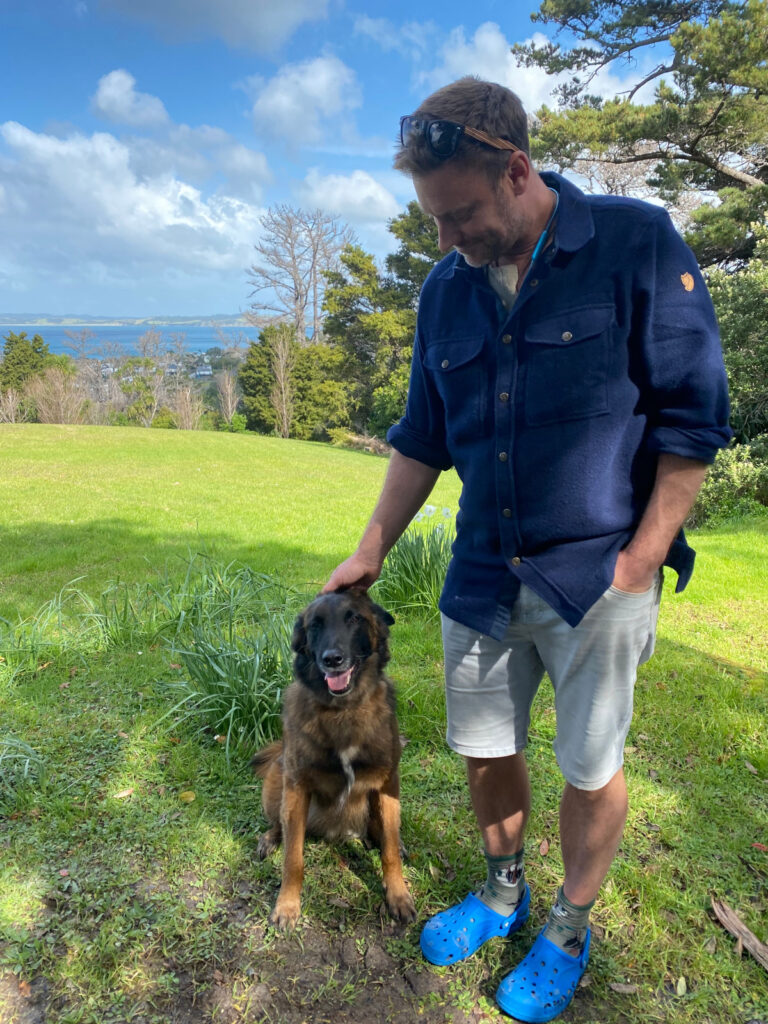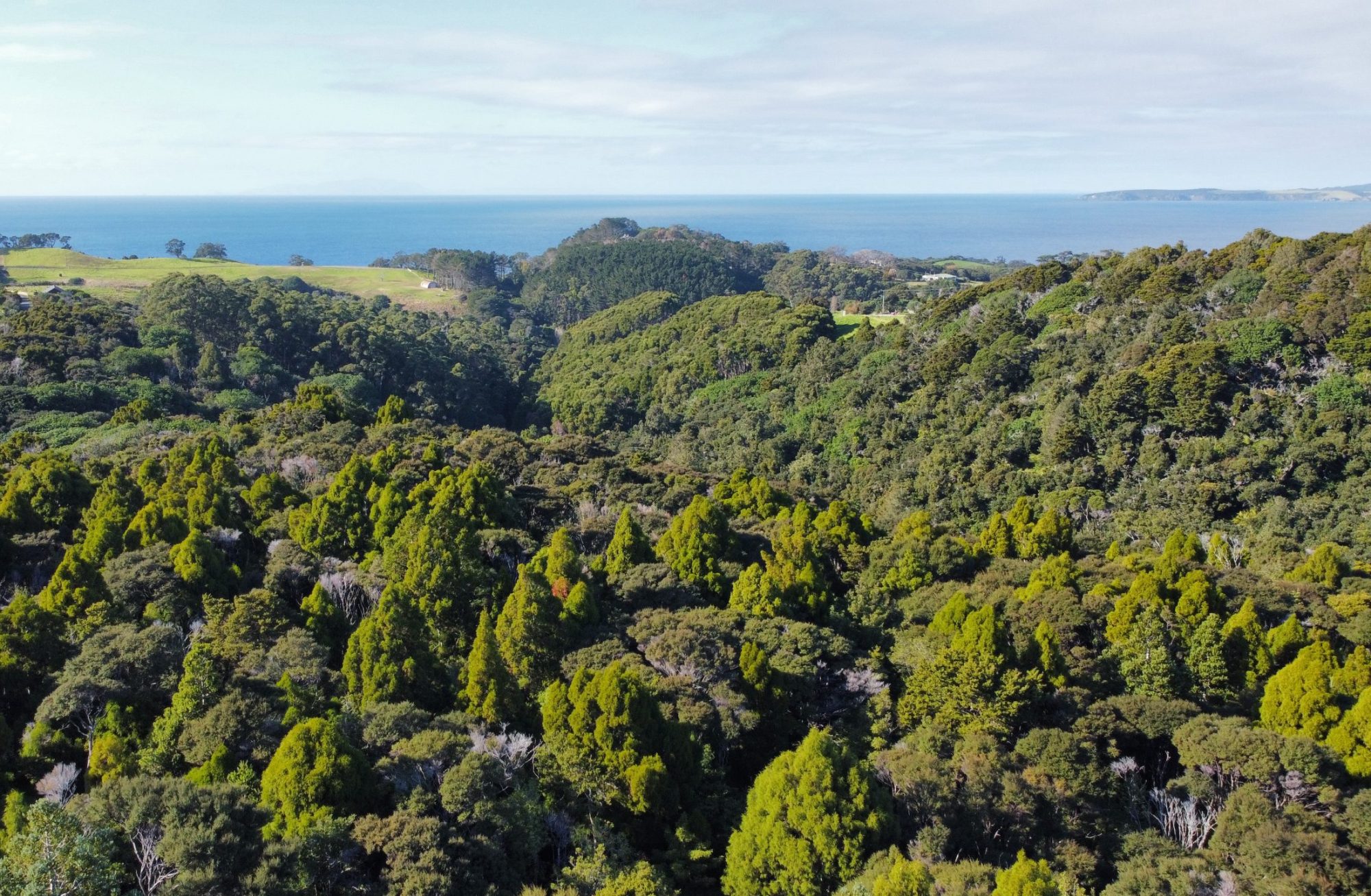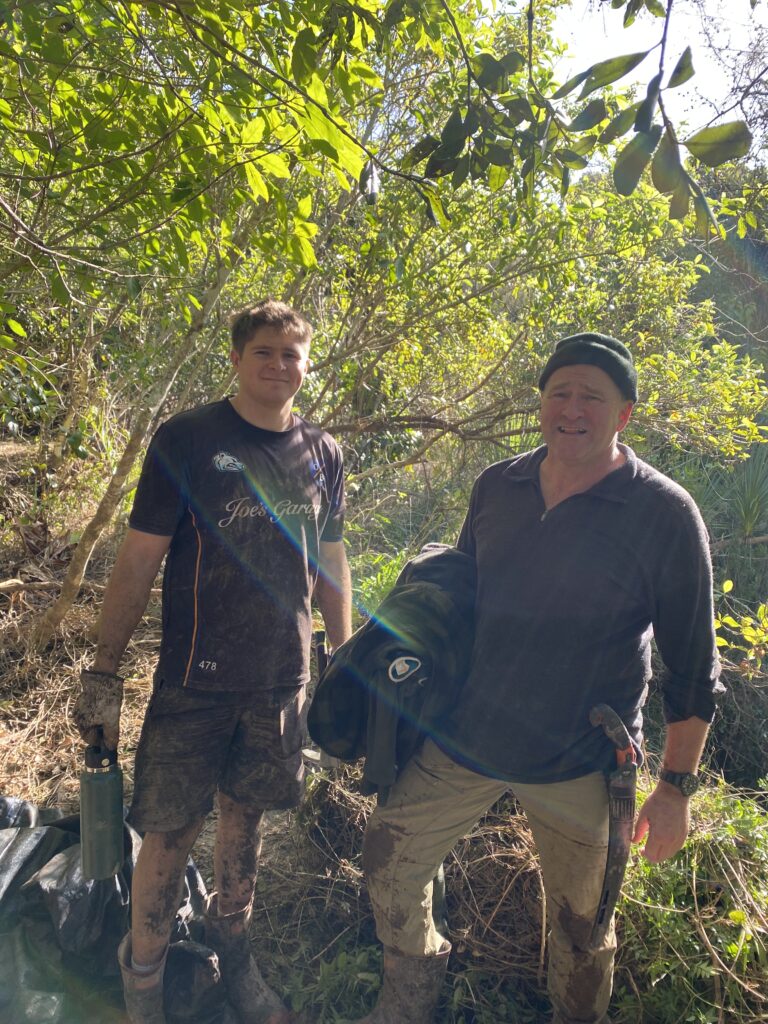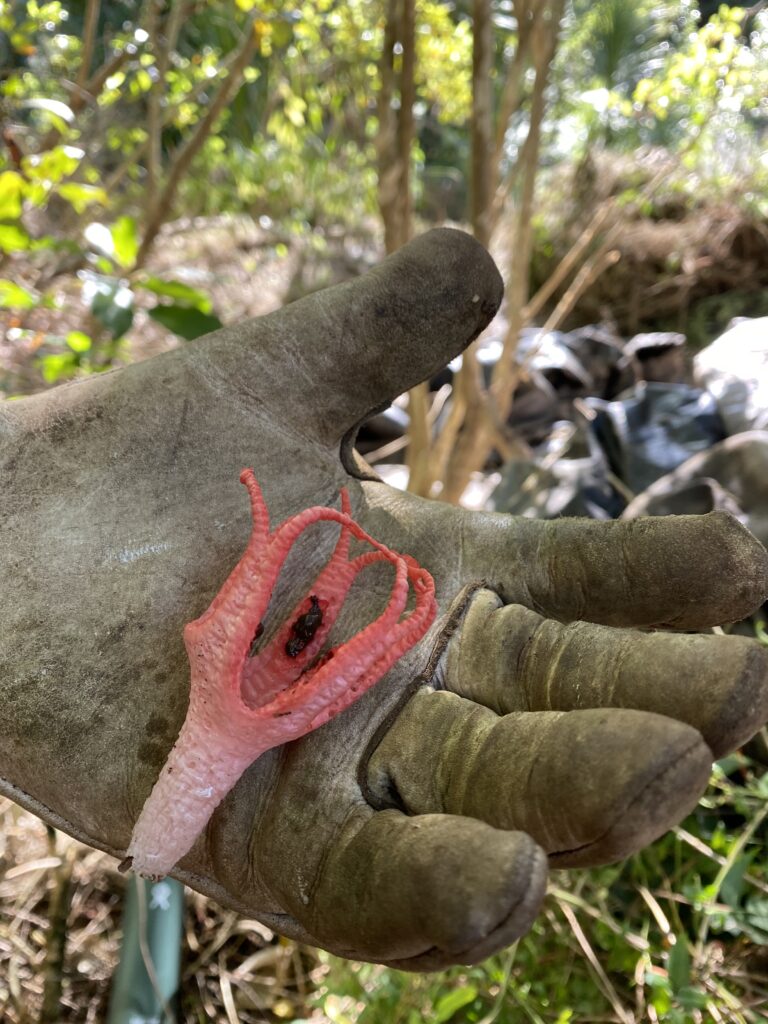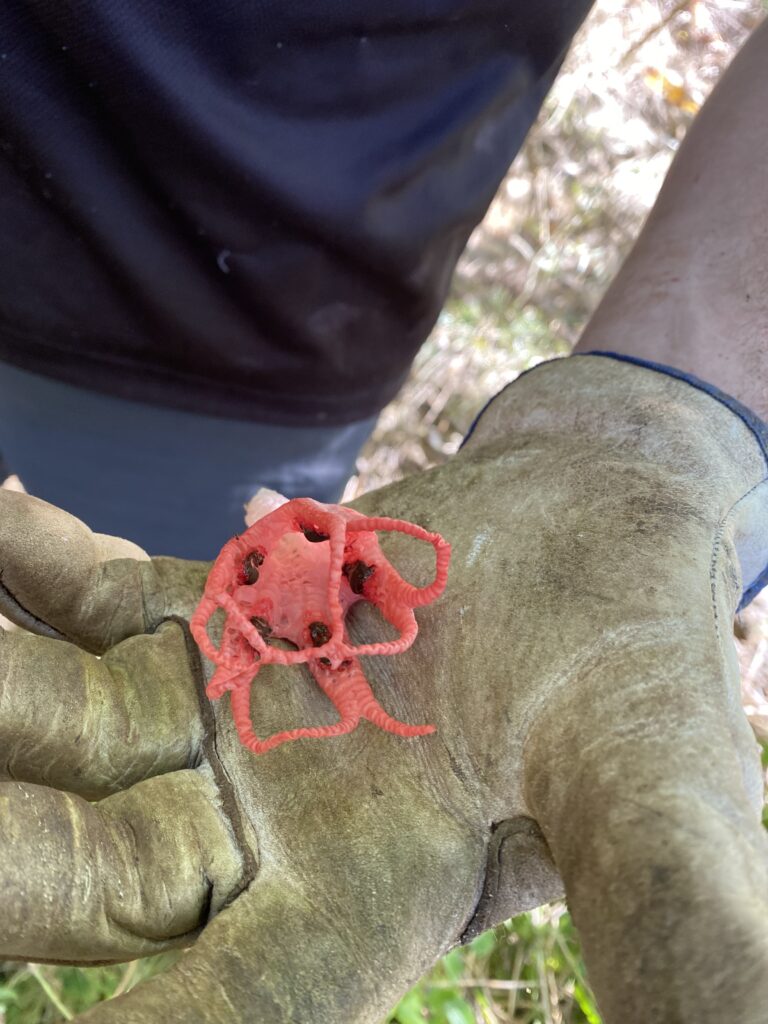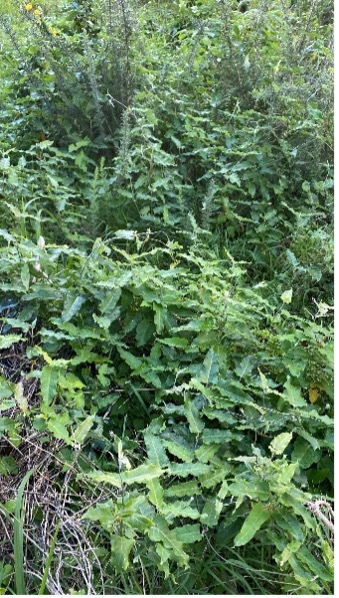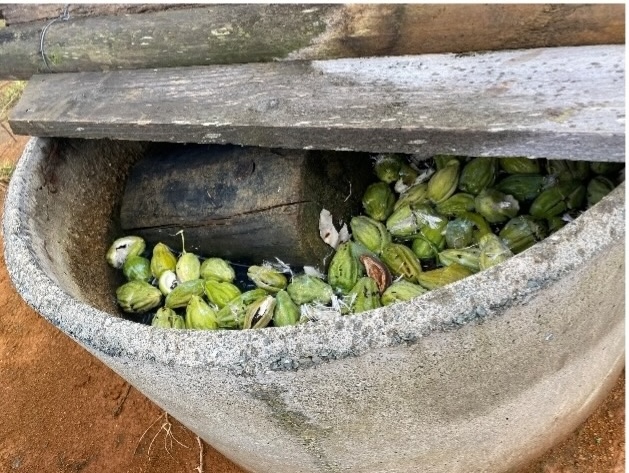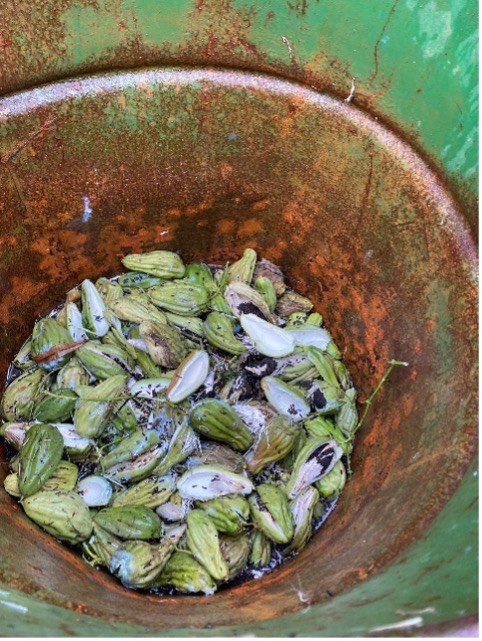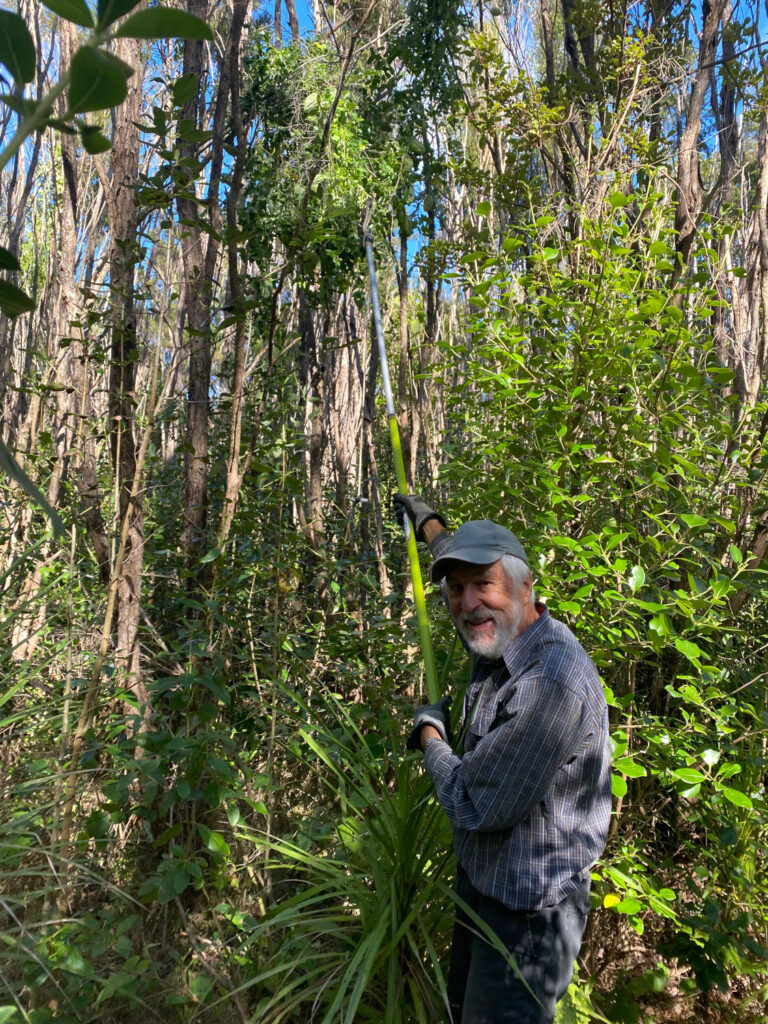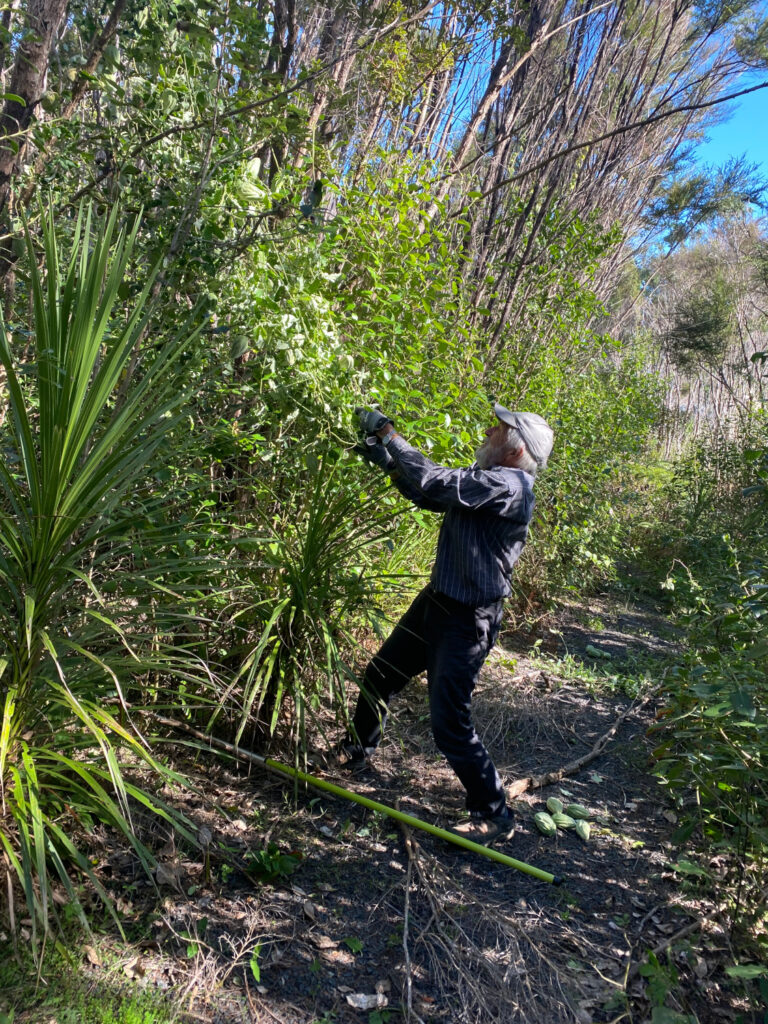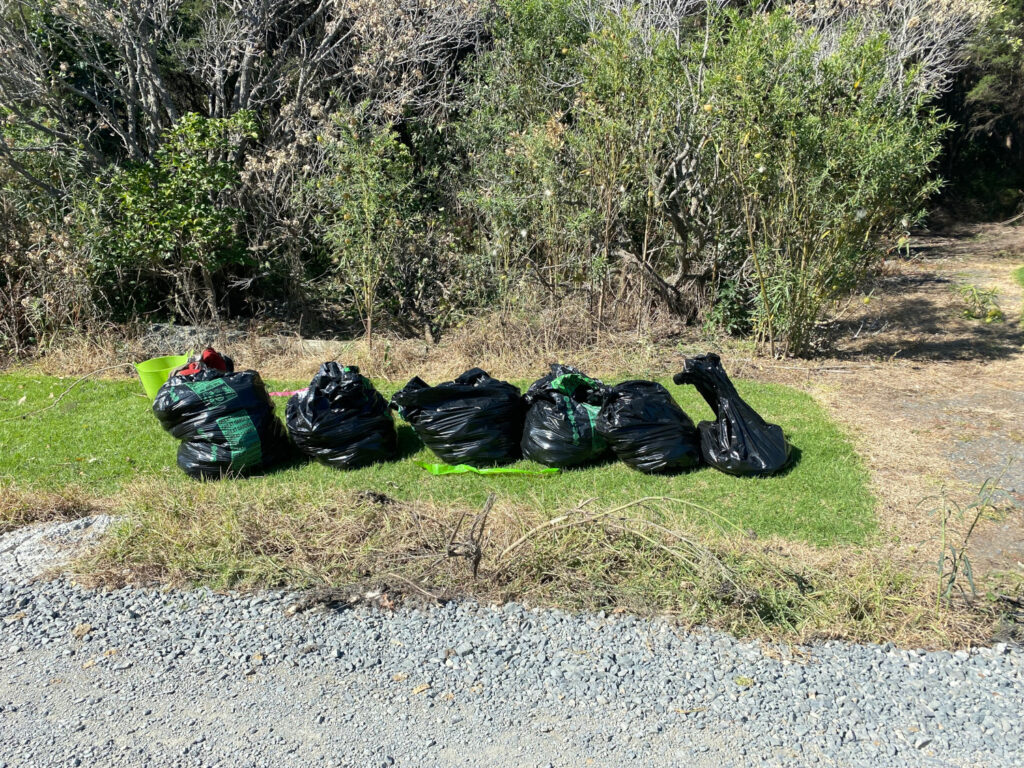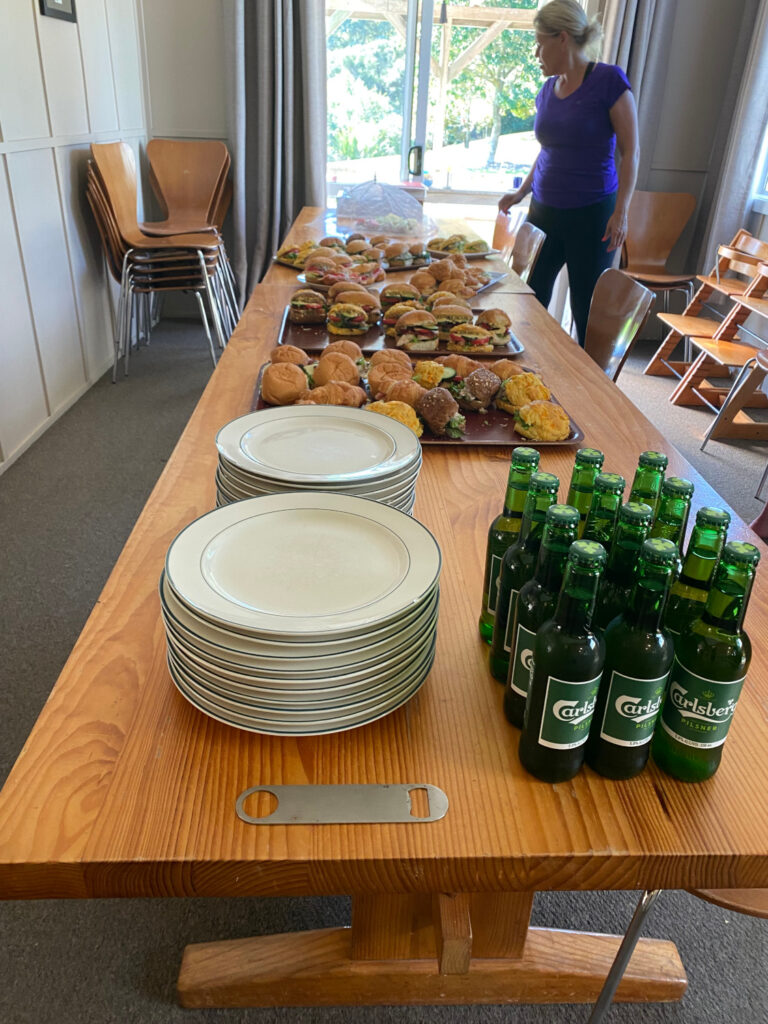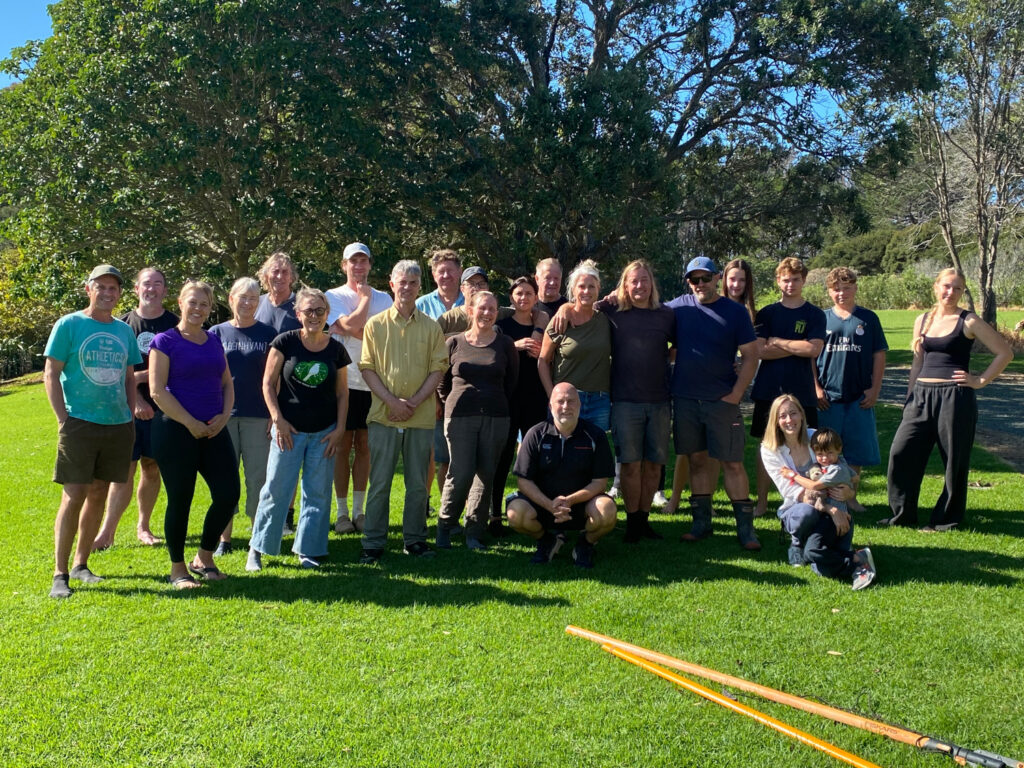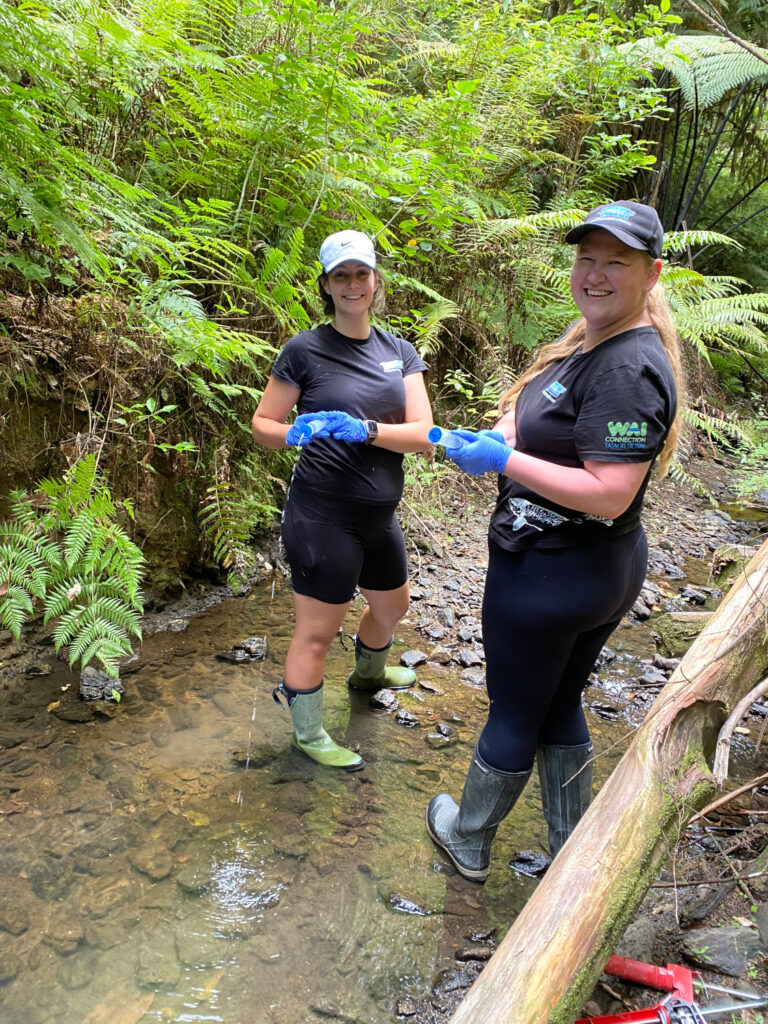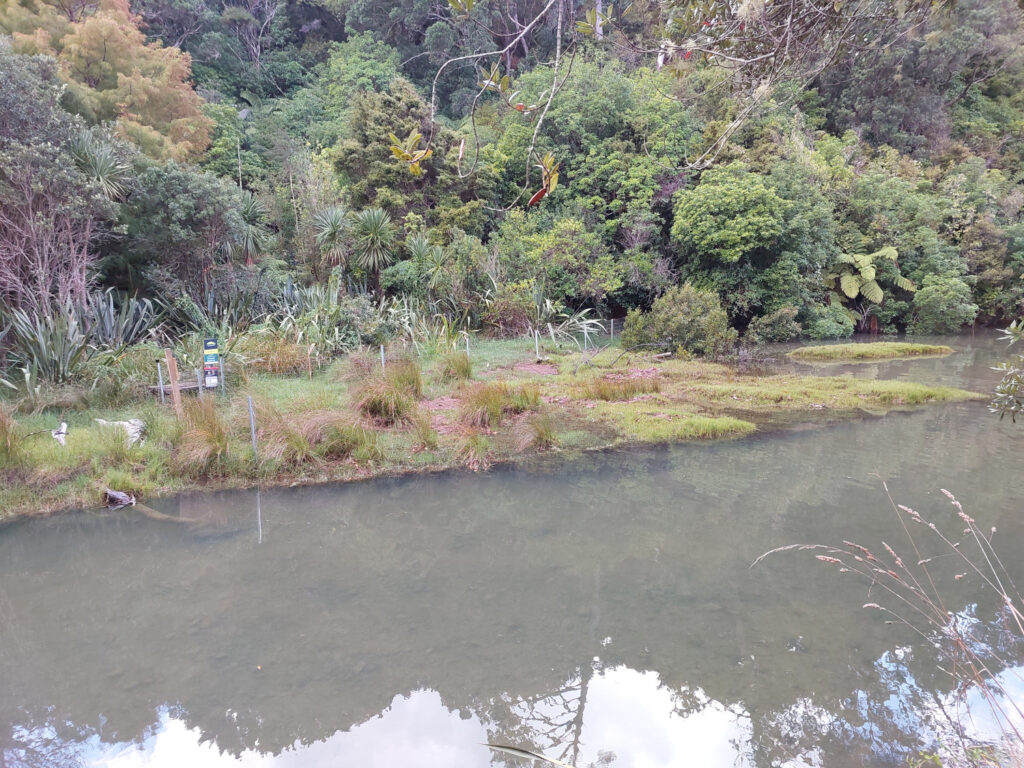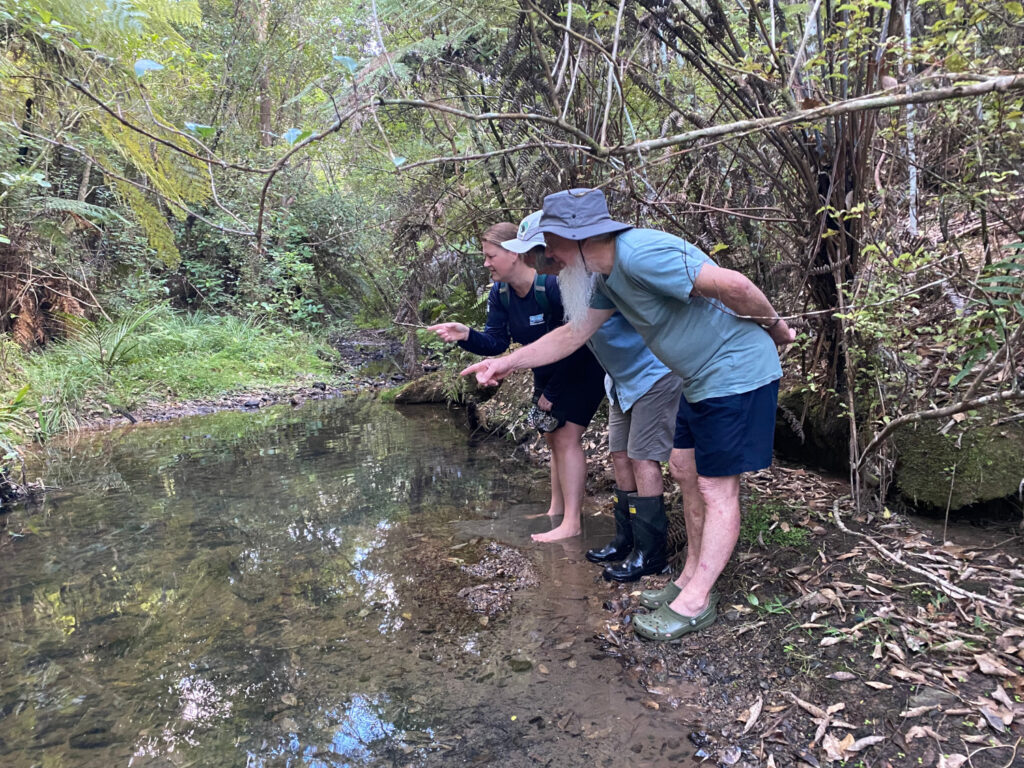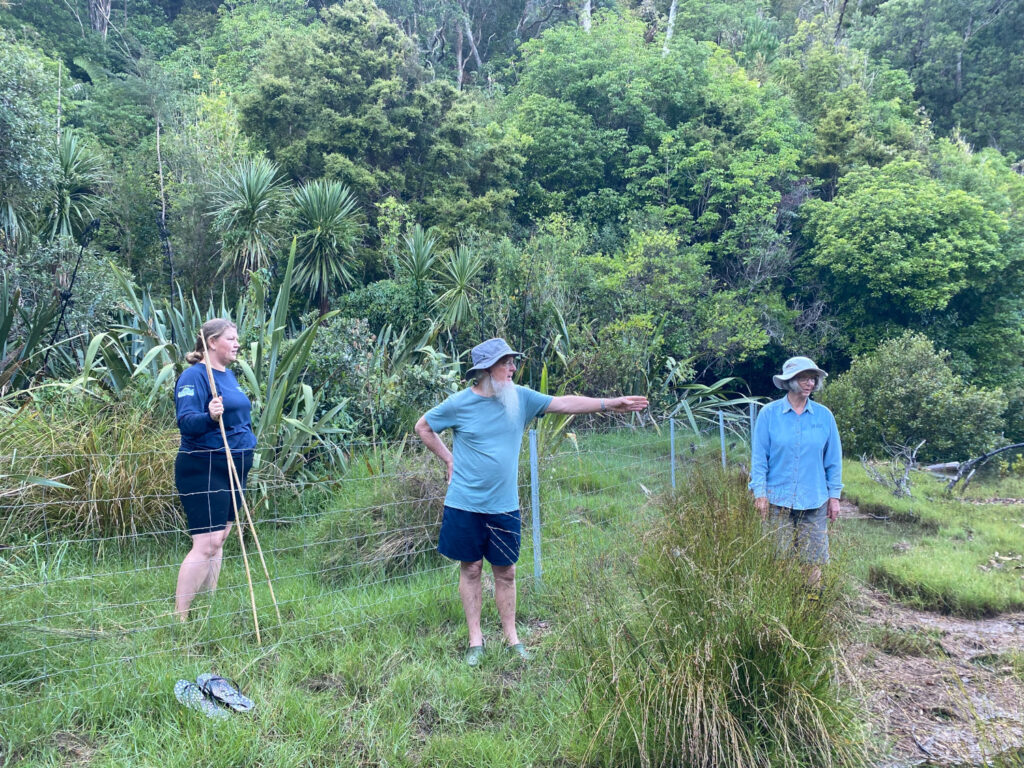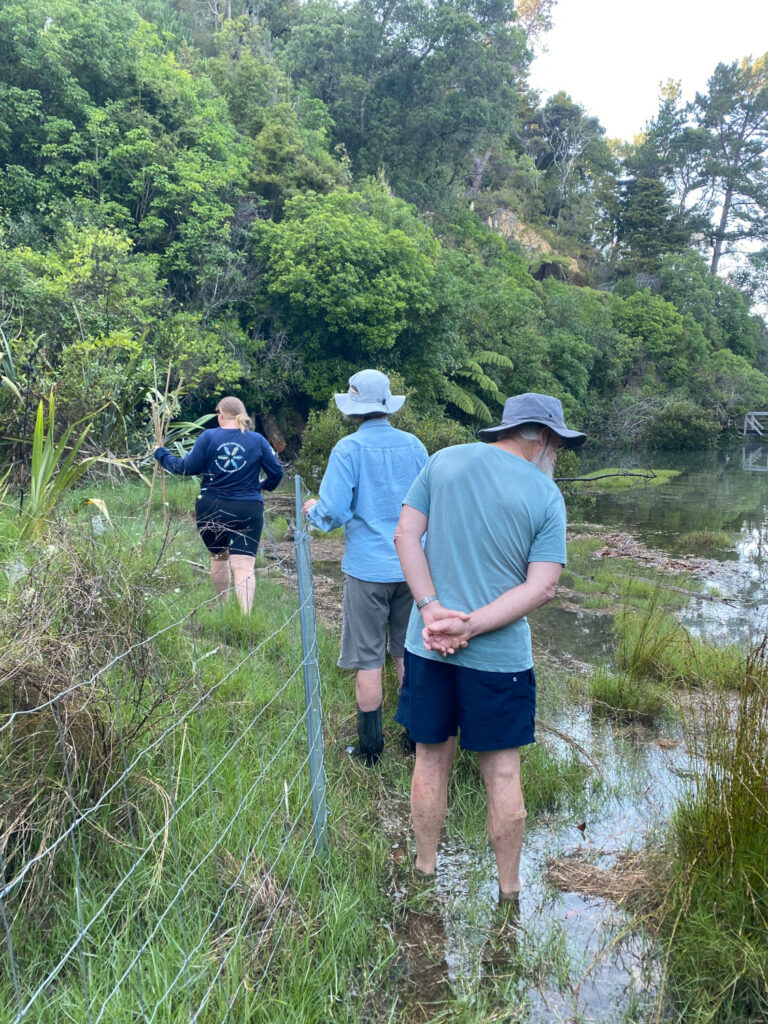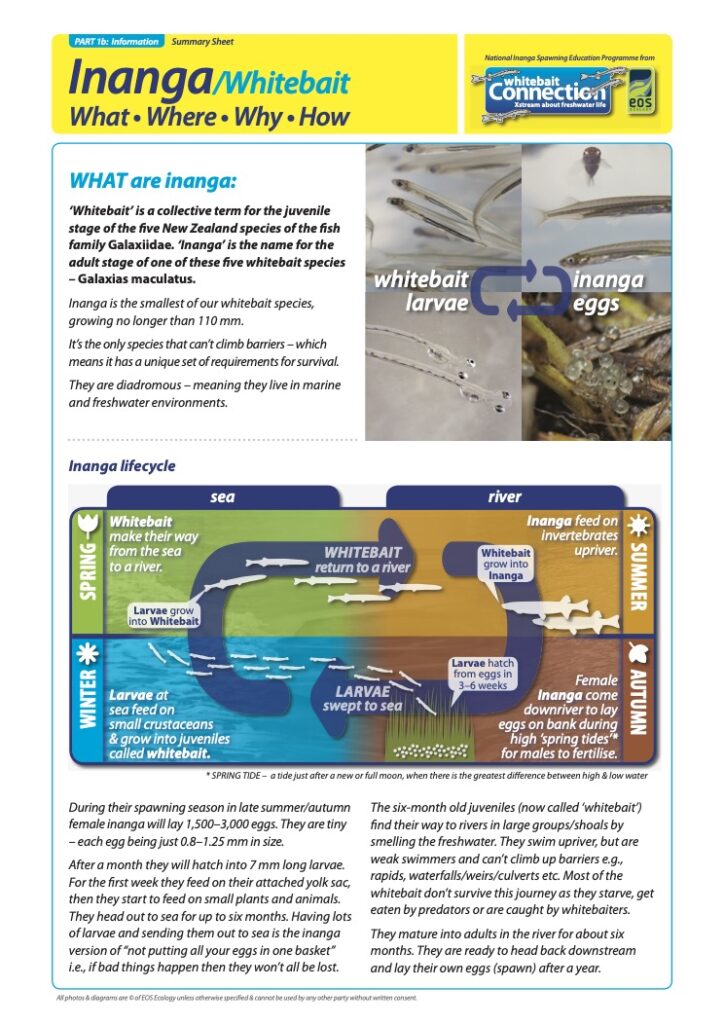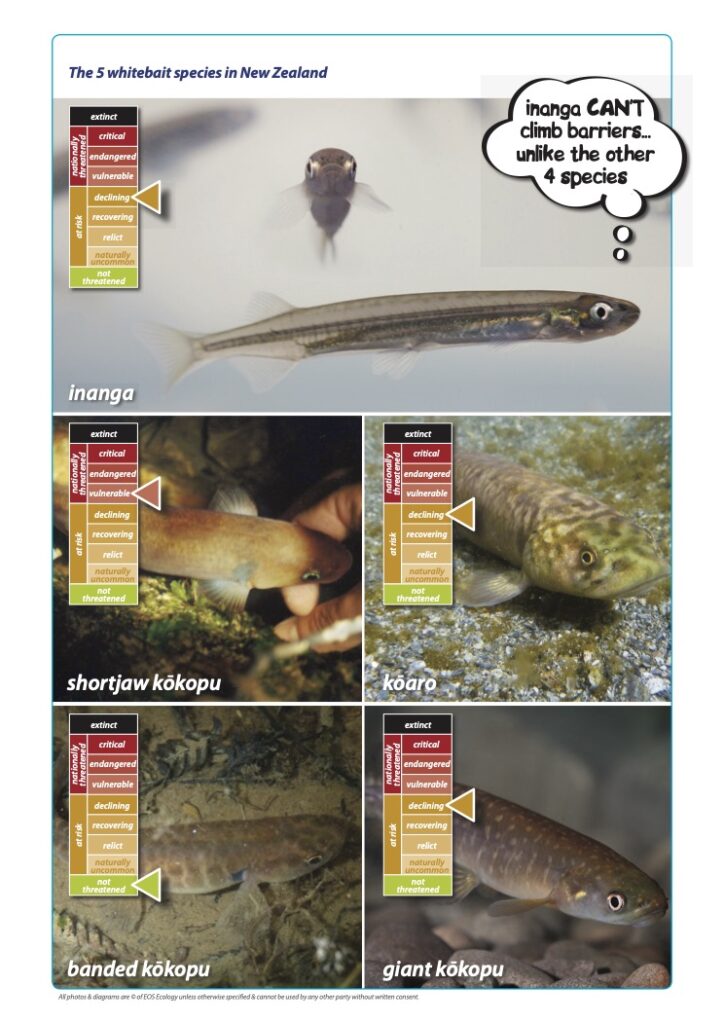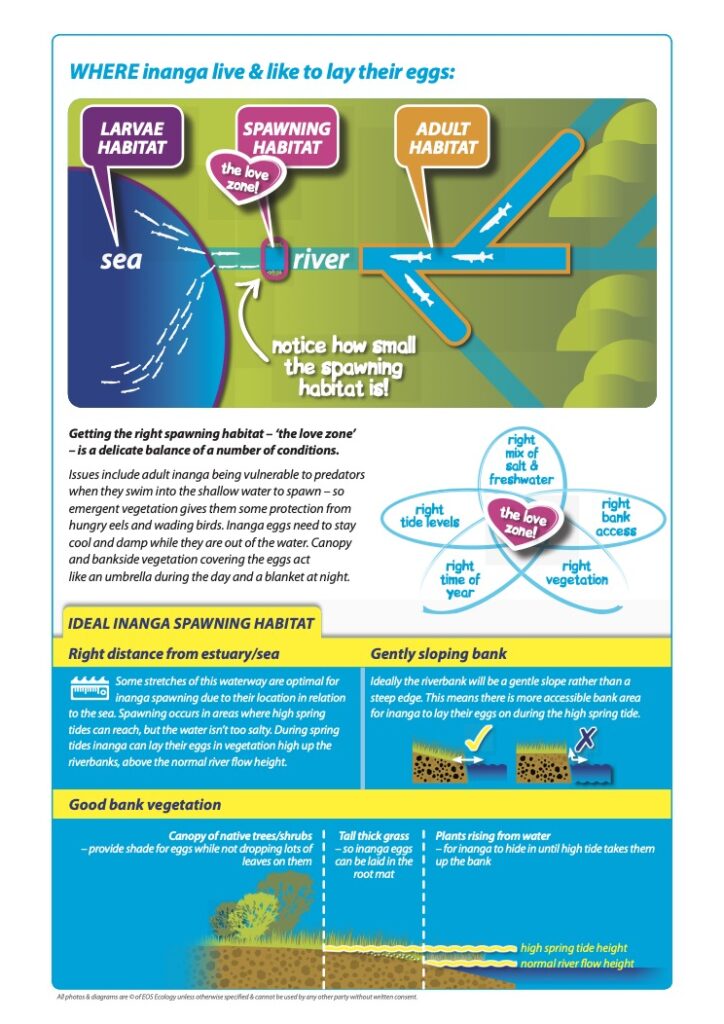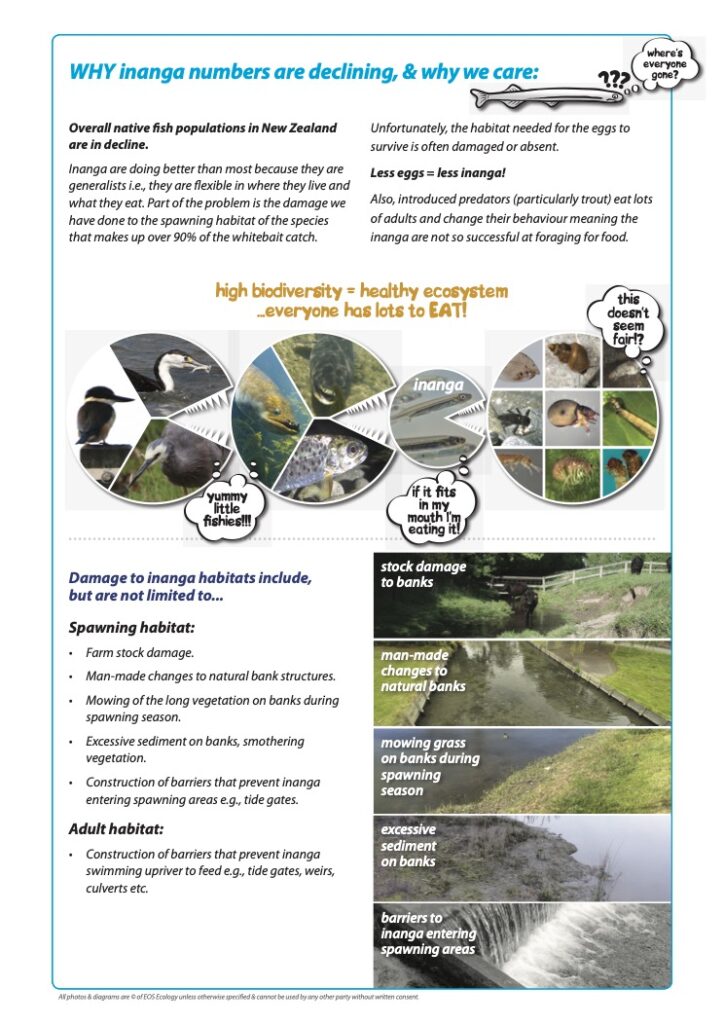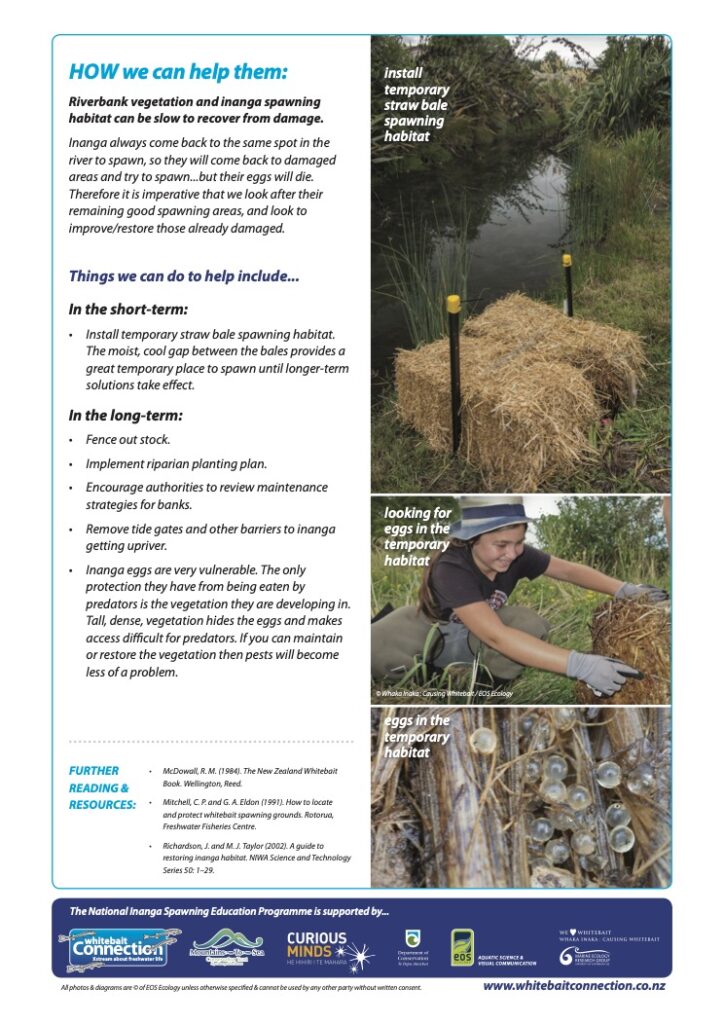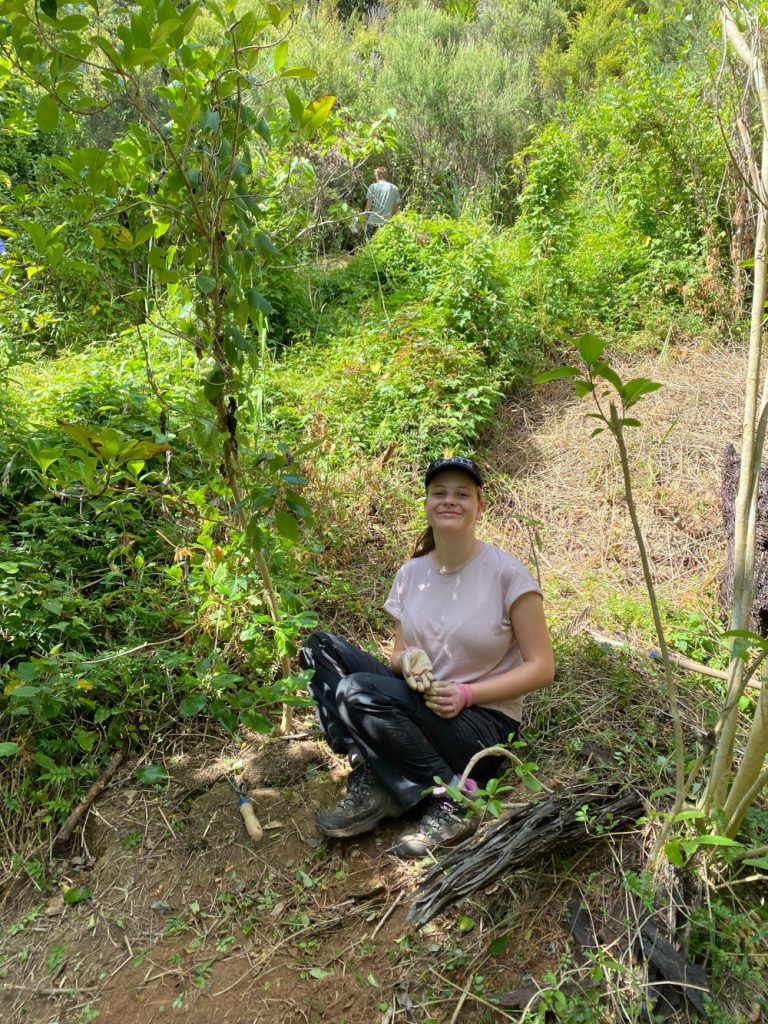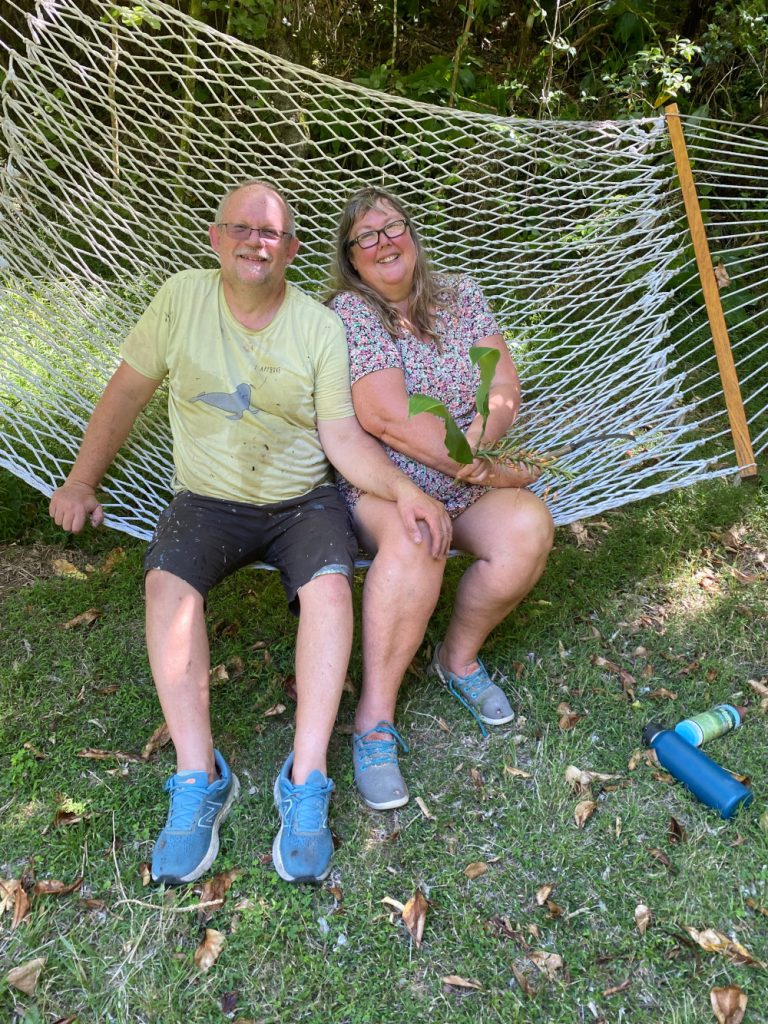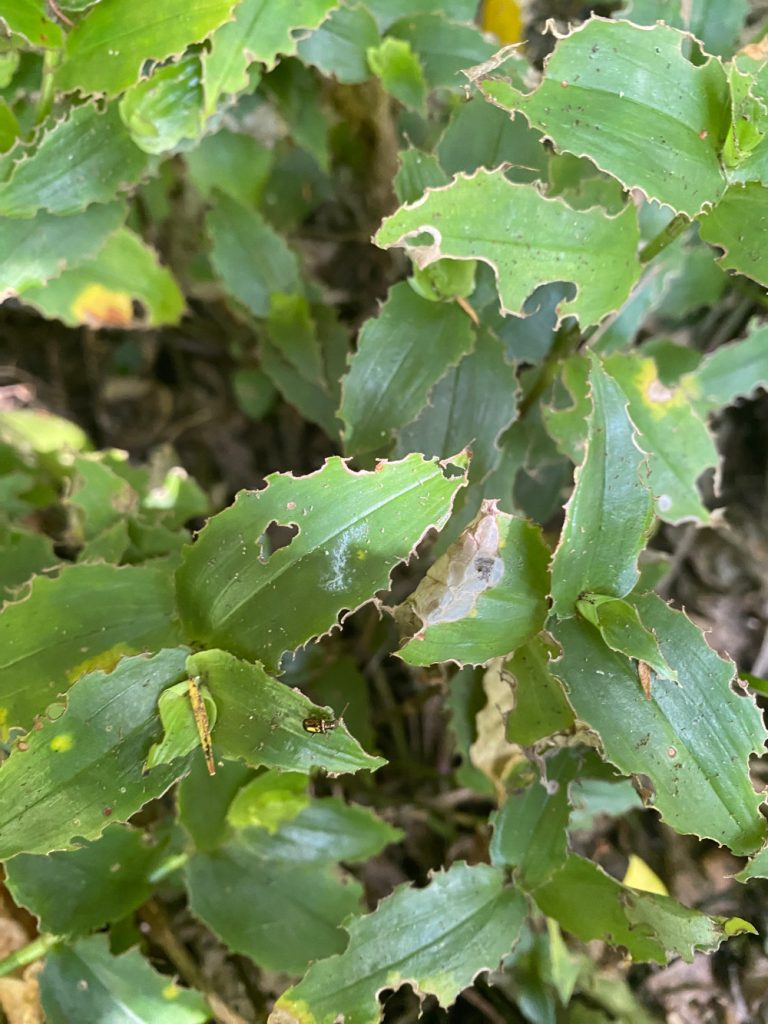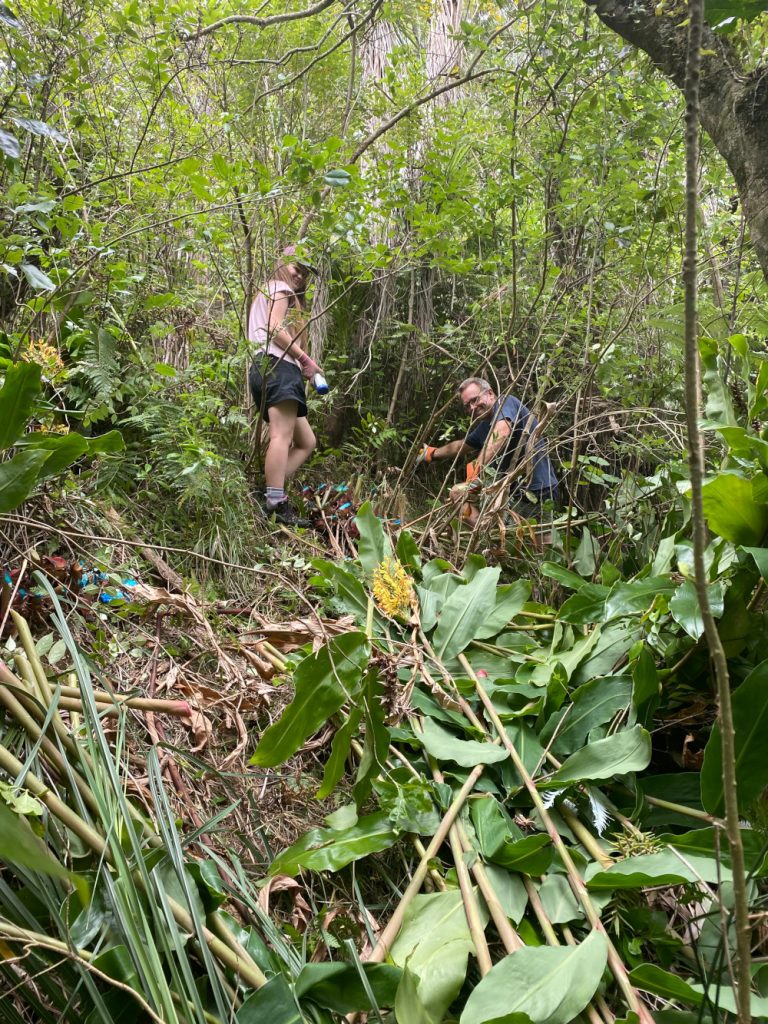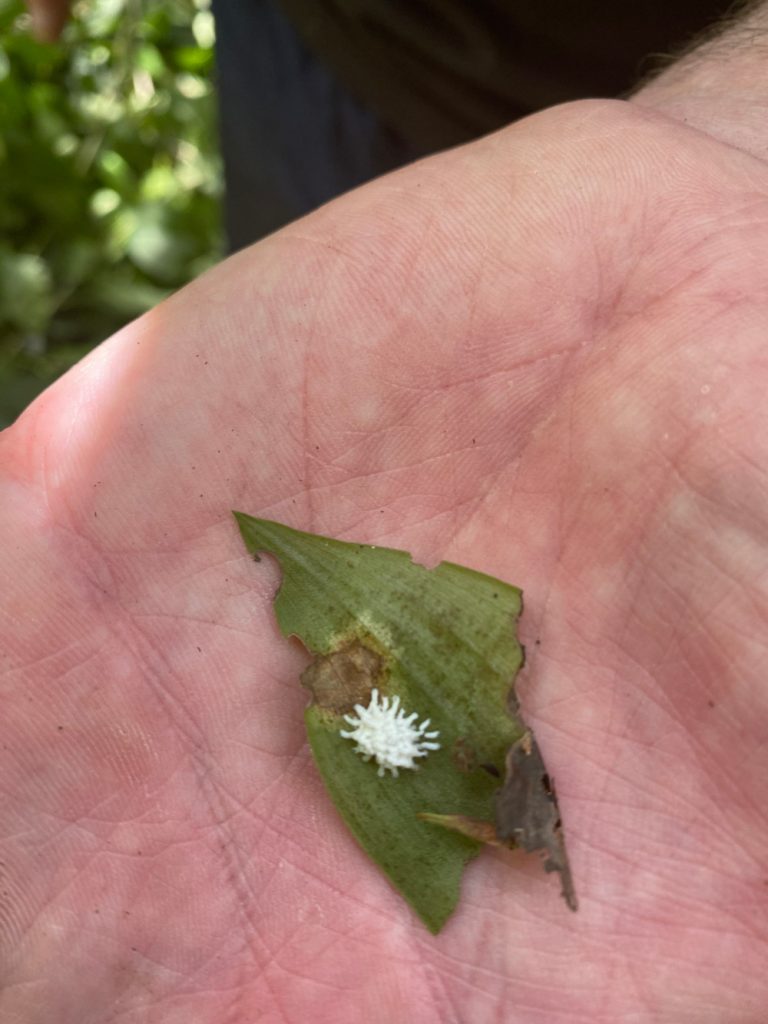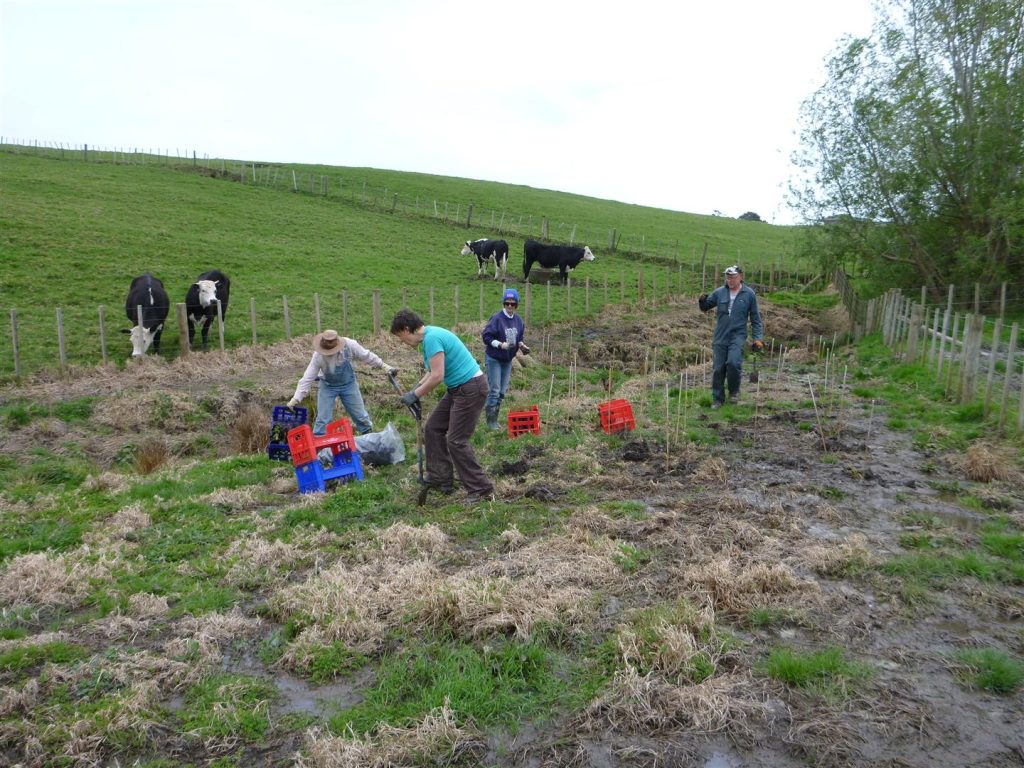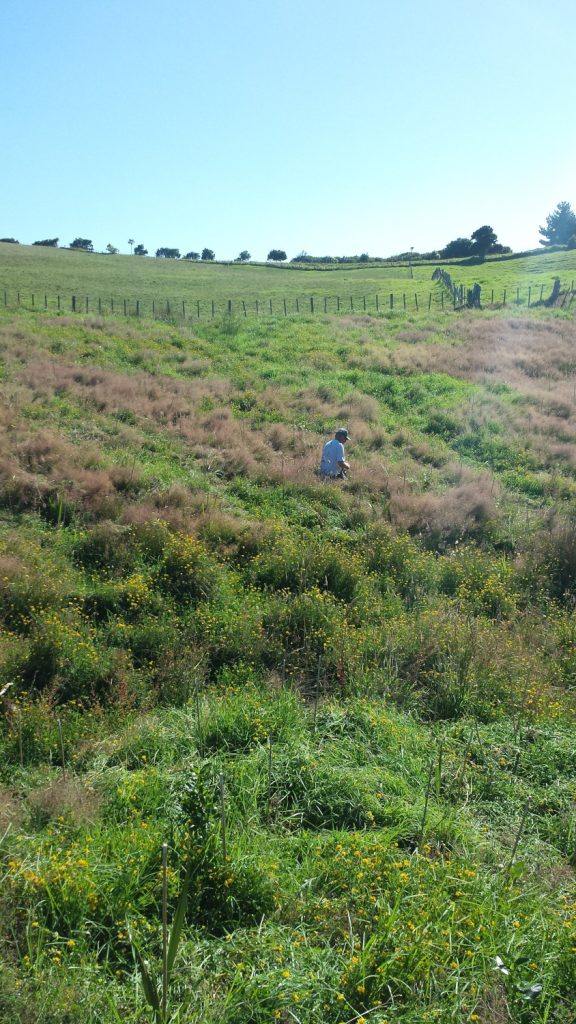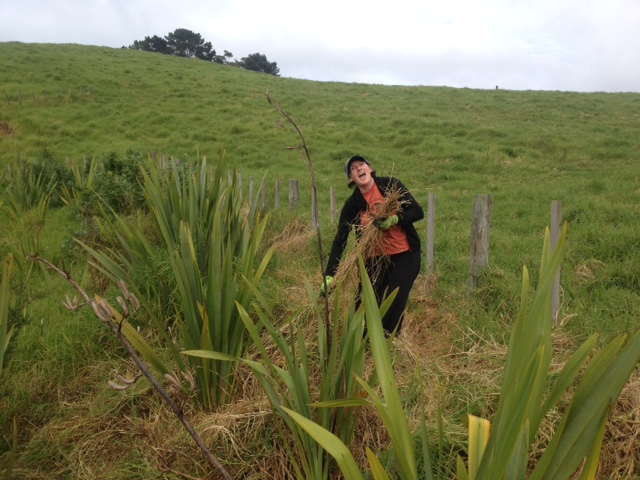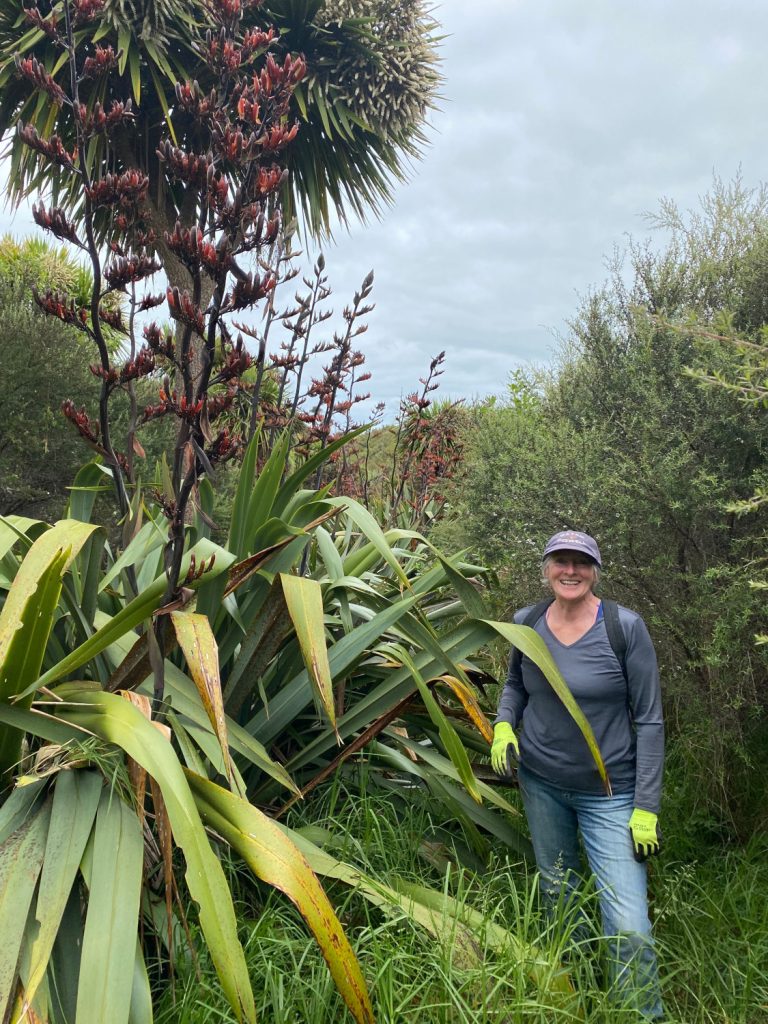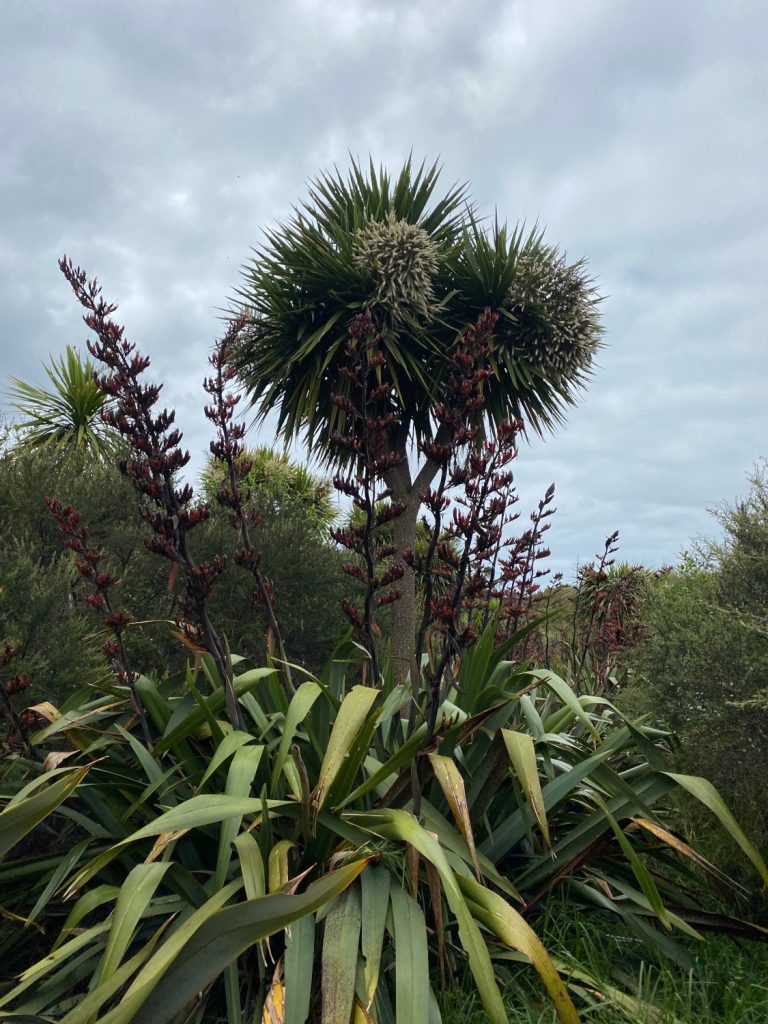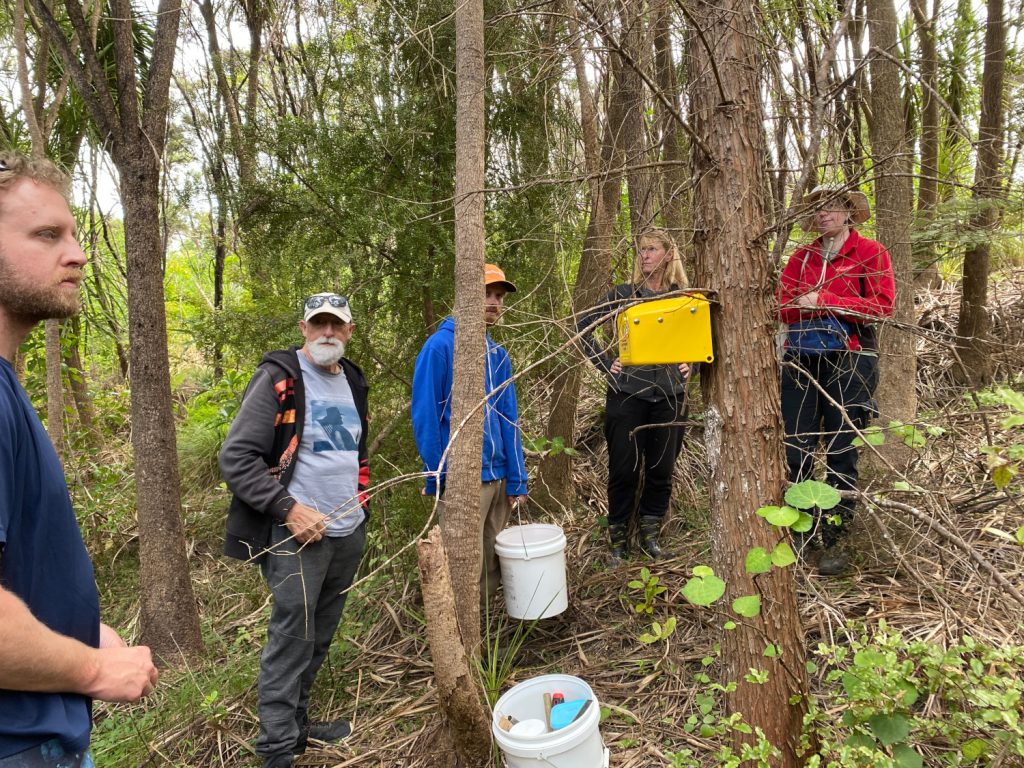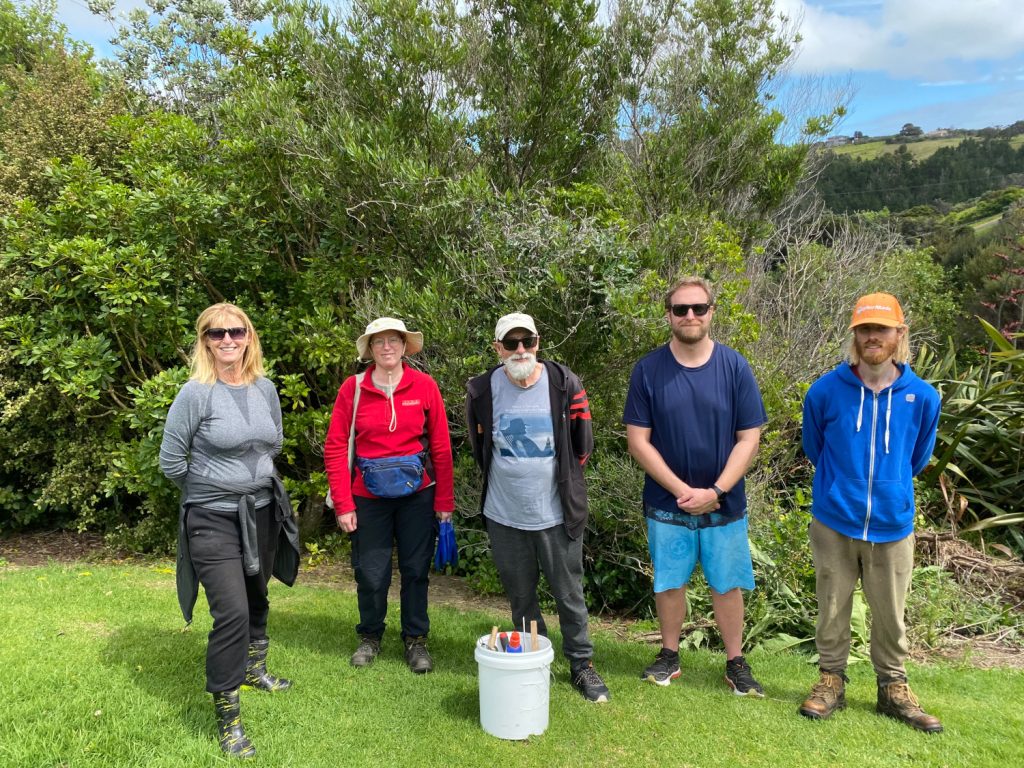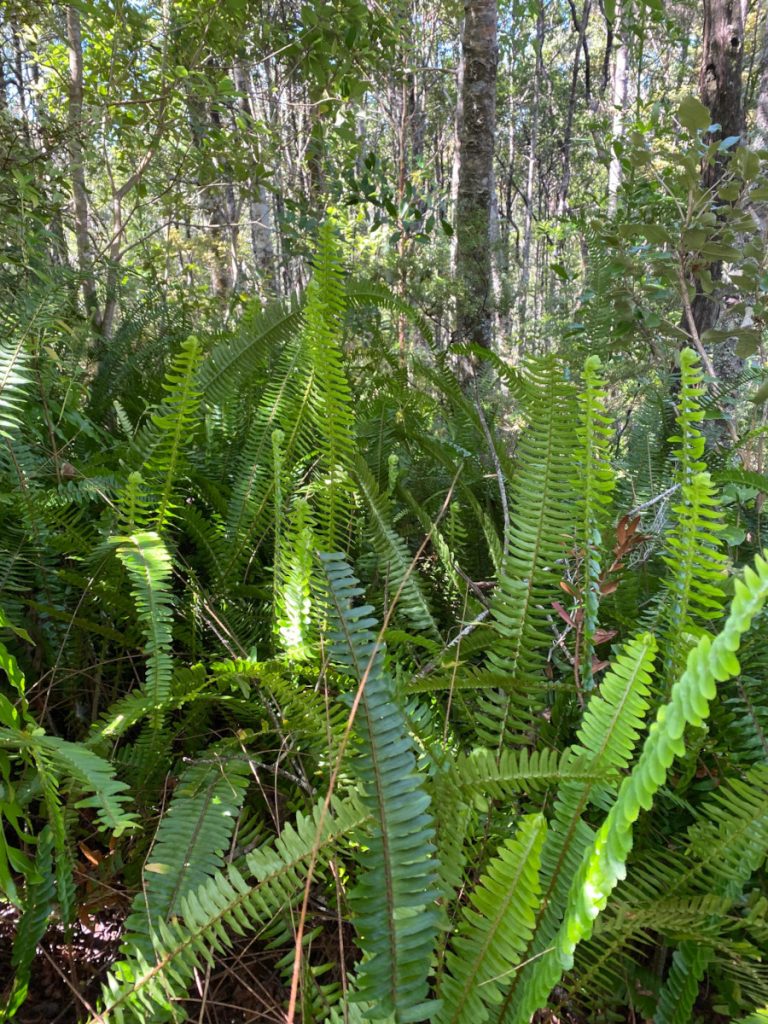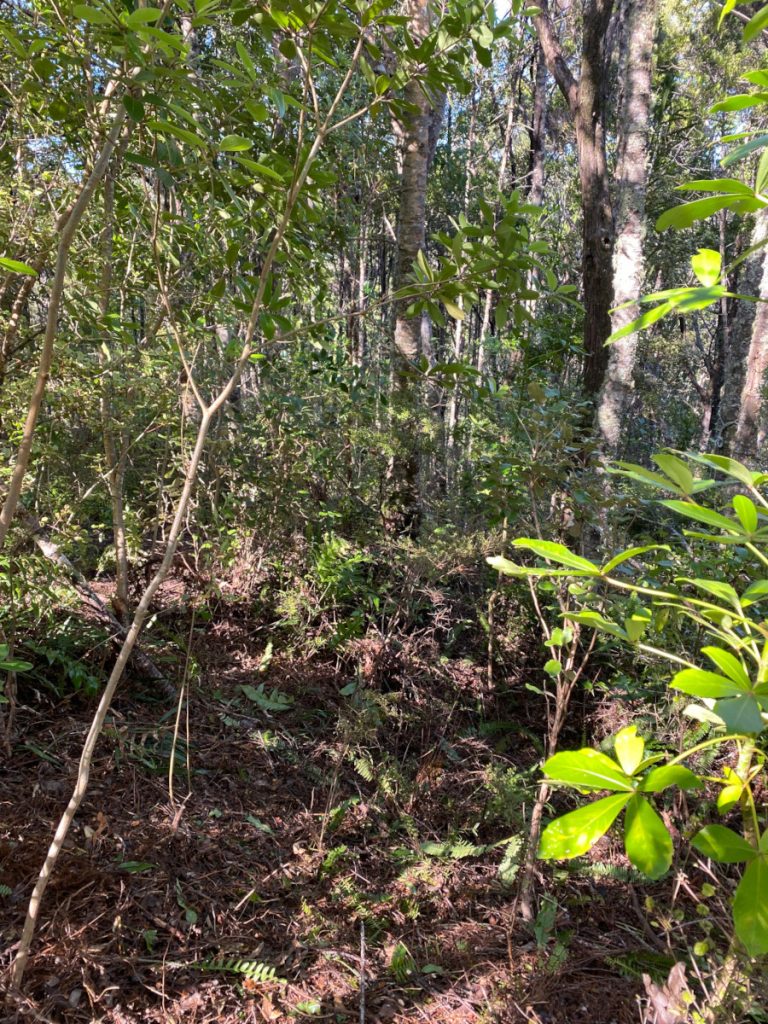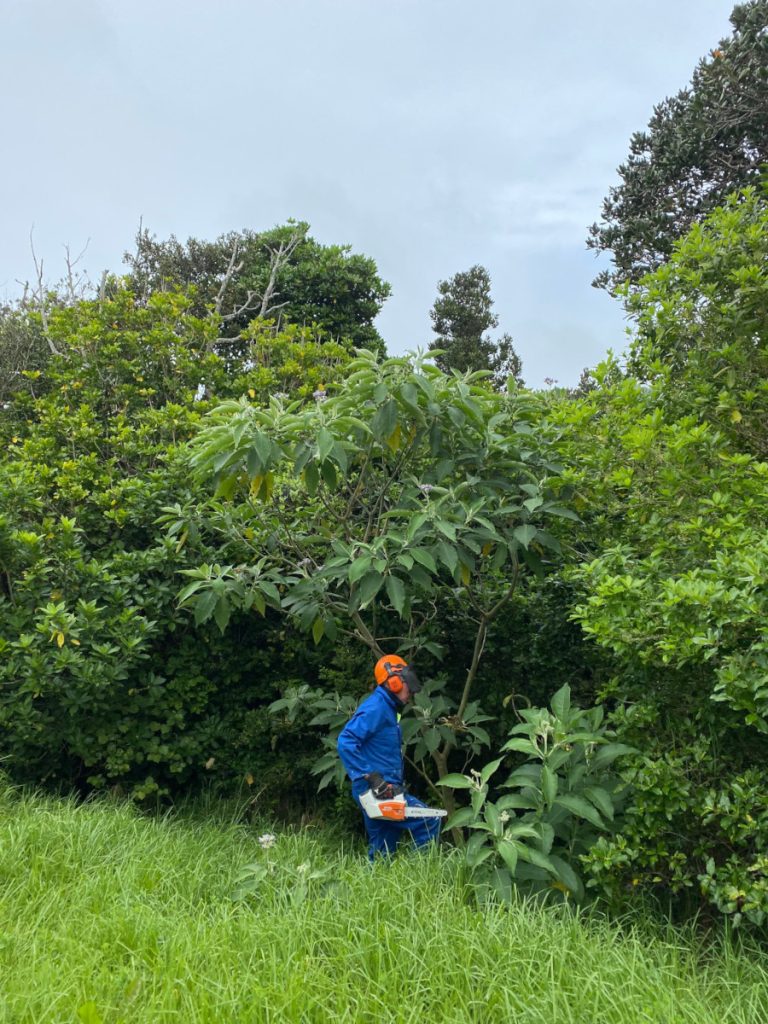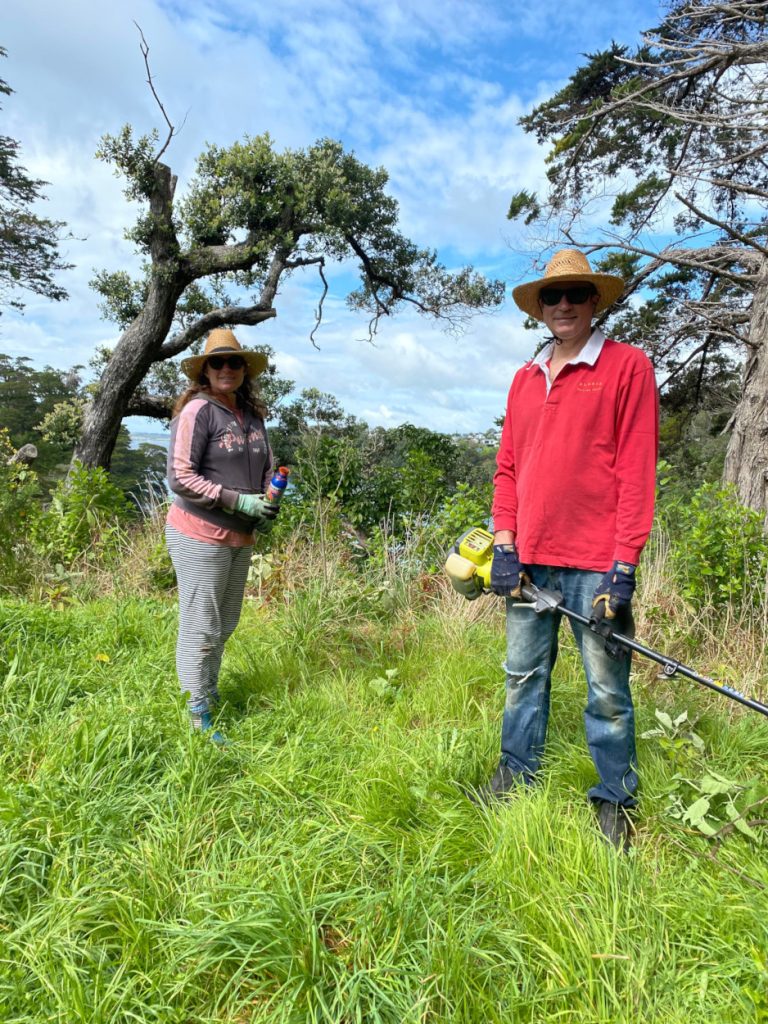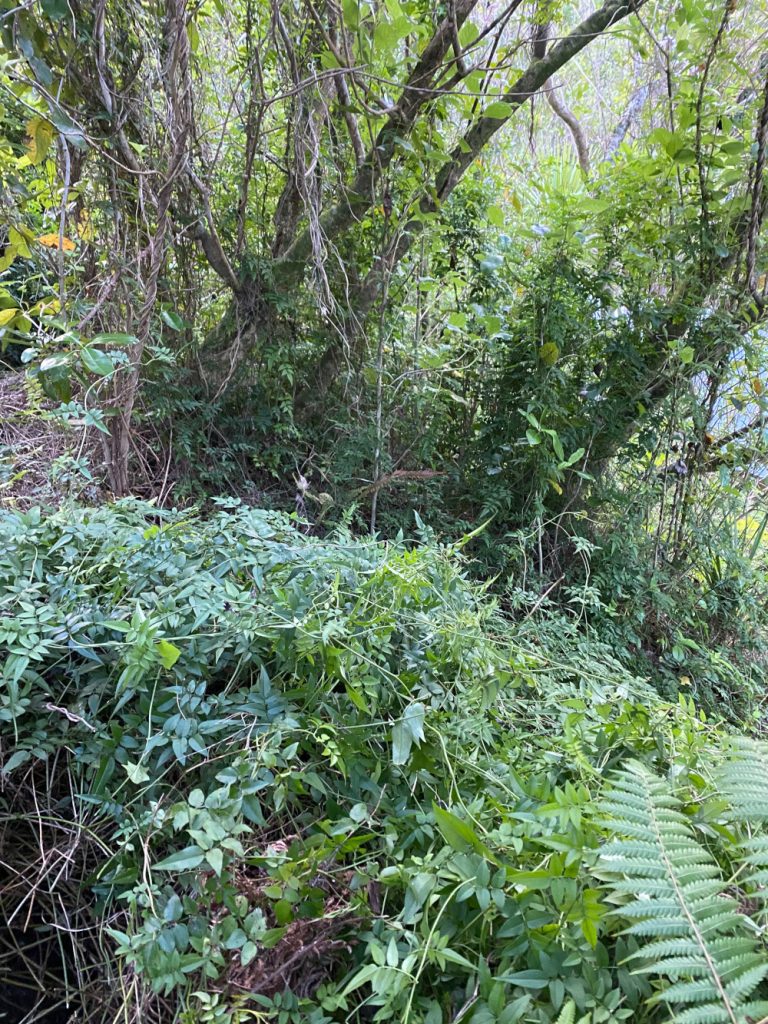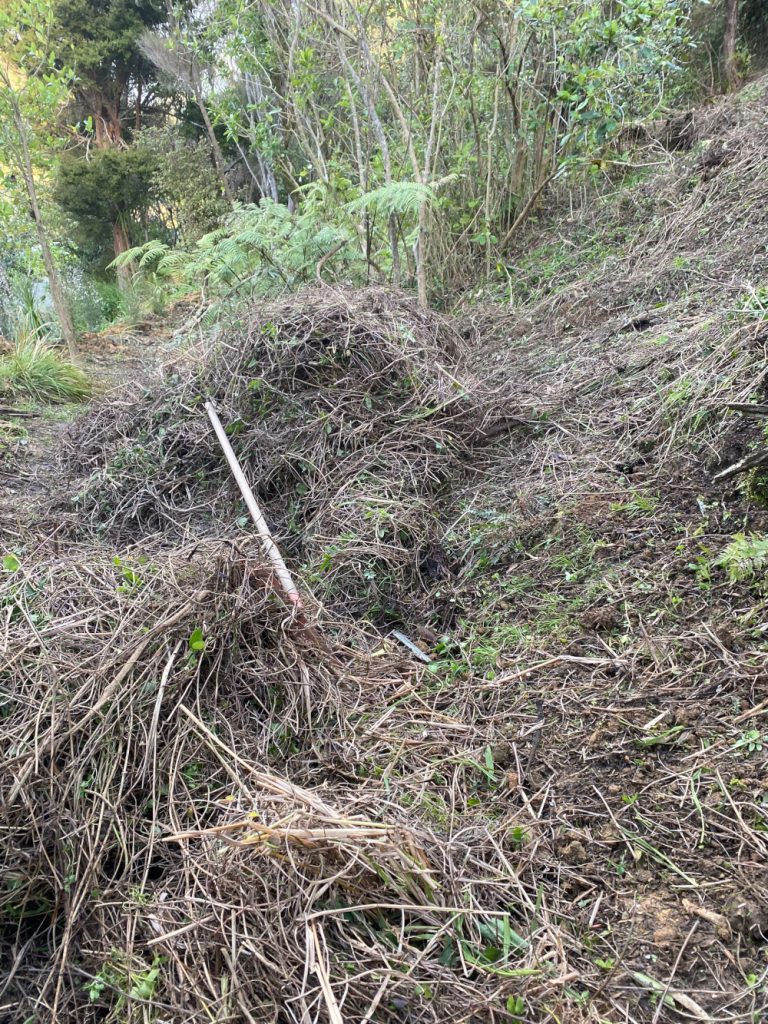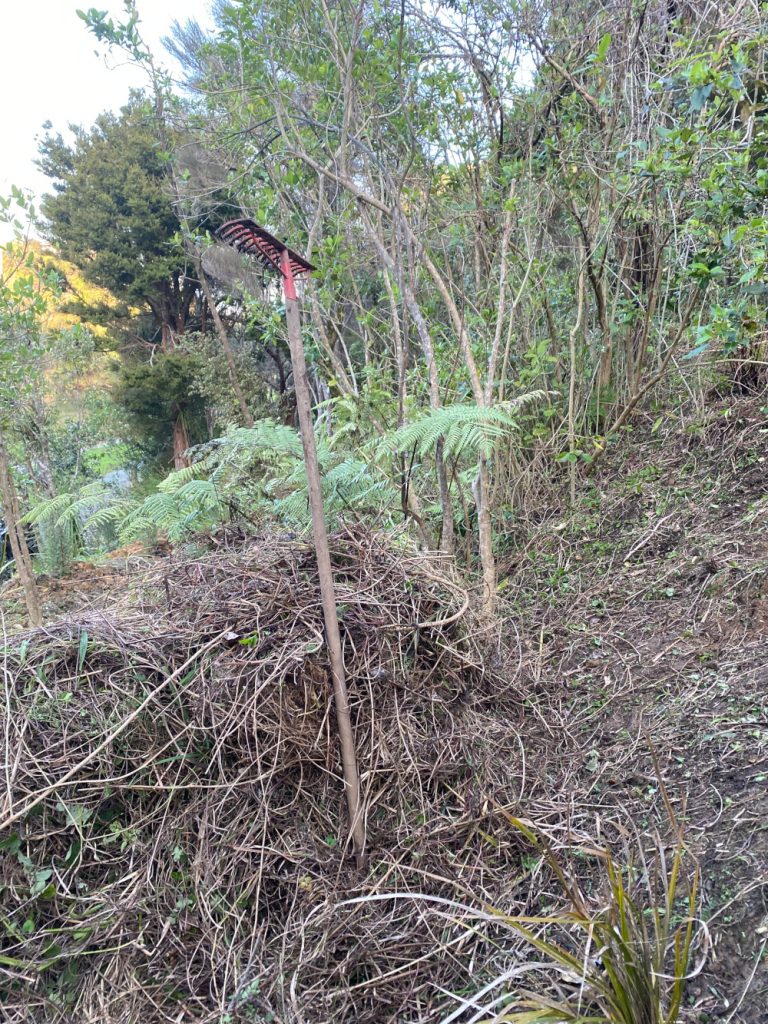Back in February 2024, we were thrilled when Forest Bridge Trust detected a single long-tailed bat on a monitor placed along the edge of the bush on Mt Pleasant Drive. It was a small sign, but an exciting one, hinting that our precious native pekapeka might be living close by. Both the long-tailed bat and the lesser short-tailed bat are in danger of becoming extinct if more isn’t done to reverse their decline.
On Friday, 29 August, bat expert Freddie Hjelm paid us a visit, accompanied by Hawke – New Zealand’s very first bat detection dog. It was such a joy to see Hawke again. We feel we’ve developed a special bond with him after spending so much time together, including over the past two Christmases. Gentle by nature, Hawke is a delightful dog and perfectly suited to his detection role. This time, however, Hawke wasn’t working, and he looked rather put out when Freddie instructed him to hop back into the ute!
During his visit, Freddie took a short walk through the bush, pointing out lots of promising roosting sites. He also showed us a pekapeka that had sadly fallen victim to a cat – a stark reminder of the threats these fragile creatures face. It’s hard to believe such tiny animals have such an impressive wingspan. Freddie also shared a few tips on how to spot pekapeka at night, leaving us with fresh hope that they could be visiting the area more often than we realise.
Just over a week later, on Monday, 8 September, Freddie returned to Leigh. With assistance from Jo Evans and Sue Gibbings, he installed three bat detection monitors across the surrounding area. These devices will quietly record through the nights, and in a few weeks, Freddie will return to collect them and analyse the results.
We’re eagerly waiting to find out what they reveal. Even one more detection would be a huge encouragement for our efforts to create a safe home for these endangered creatures.
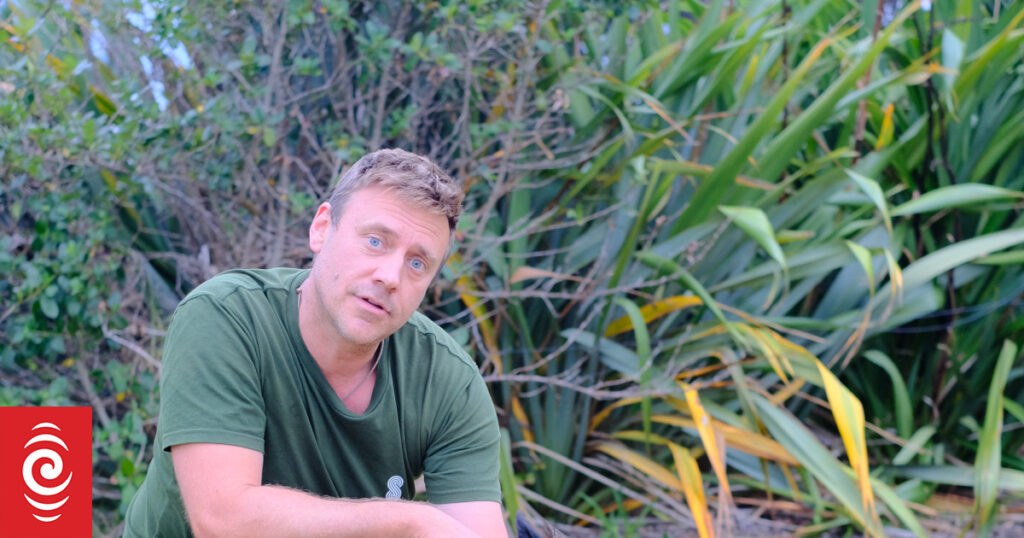
New Zealand’s first ‘bat dog’ RNZ
Fredrik Hjelm is the handler for Hawke, New Zealand’s first dog trained to sniff out dead native bats in an effort to find out more about what has killed them. www.rnz.co.nz
